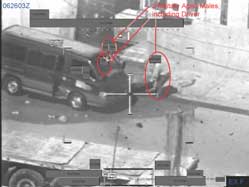Last year started off with hopeful signs for civilians living in Afghanistan. A report by the Afghanistan Independent Human Rights Commission claimed that civilian casualties in the country during the first two months of 2010 were down slightly from the previous year. However, those hopes were soon dashed and now the final tally is in. A report released this week by the United Nations finds that 2010 was the bloodiest year for Afghan civilians: 2,777 dead — the highest number in a decade.
Counterinsurgency’s proponents argue that one of the best metrics for measuring progress is the number of civilian casualties, an unconventional metric of success for a military operation. Indeed, protecting the population has held a prominent place in ISAF’s doctrine for years. However, by that metric, the statistics released by the United Nations show that the war in Afghanistan is not going well, and is getting worse. But the blame cannot rest fully on the shoulders of coalition forces. According to the report, 75% of civilian casualties were caused by the Taliban and other anti-government forces.
The failure of the international forces to protect Afghan civilians might be the reason the Department of Defense is moving away from using civilian deaths as a measure of progress in favor of more traditional military metrics. Specifically, as Spencer Ackerman of Wired’s Danger Room blog quipped: “the [enemy] body counts are back. In a big way.” USA Today recently reported that 900 Taliban “commanders” were killed or captured in the last ten months. While on the surface an impressive statistics, the organization (or disorganization) of the Taliban movement makes the figure rather dubious: “it remains unclear what ISAF means when it designates someone a commander” argues Joshua Foust in an article for PBS’s Need To Know, “that is, what number of fighters that leader is responsible for and what the strategic effect of taking him off the battlefield will be.”
There is a valid worry that this new focus on enemy body counts will only increase the risk to civilians. The metrics you measure determine the actions you take. By demoting civilian deaths and promoting enemy body counts as metrics of progress, commanders will likely be more willing to sacrifice the former to accomplish to latter. Pressed between the Taliban fighters and ISAF units, Afghan civilians are going to face a tough year ahead.
